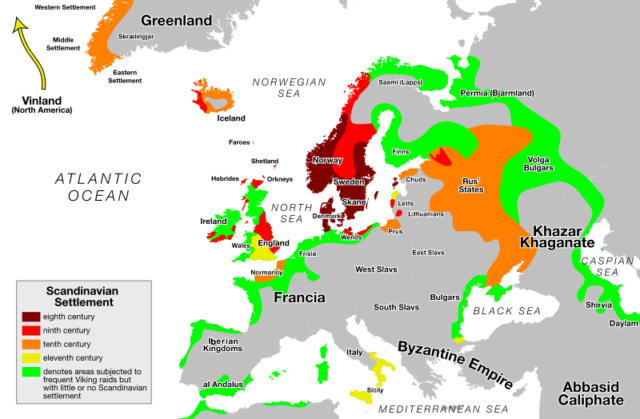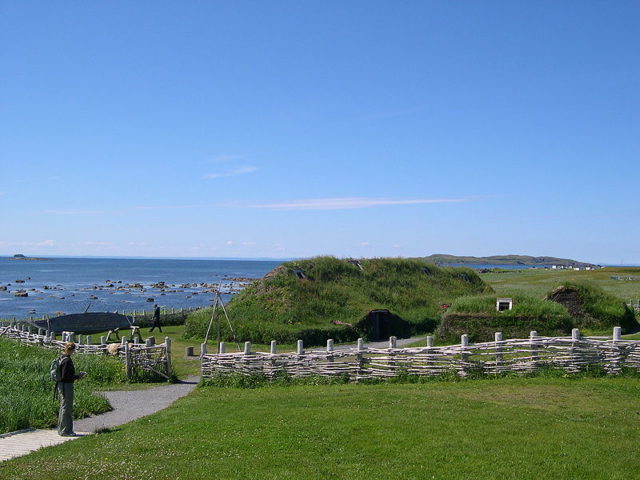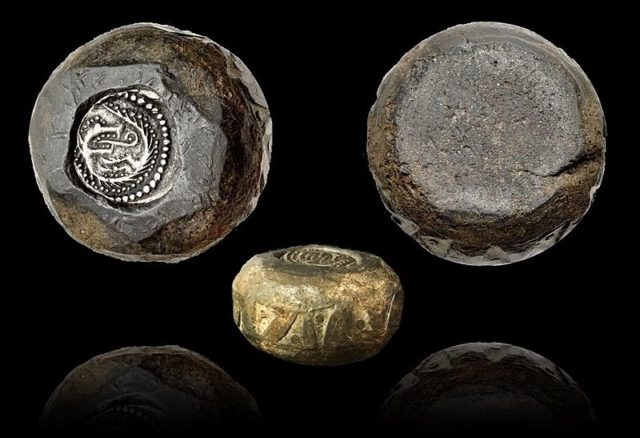The region of Scandinavia – which includes the countries of Norway, Sweden, and Denmark – has a rich and varied history that includes 300 years of the Viking Age. The Viking era becomes most influential historically in the 8th century CE, when the Vikings expanded outside of Scandinavia into Greenland and Iceland.
Over the following centuries, Viking warriors raided and settled an impressive number of locations as far as Russia and North America. Vikings first raided England in 793, and the Viking era in northern Europe is traditionally considered to have ended with the death of Harald Hardrada in 1066 during a failed attempt to take over the English throne. Leif Erikson led a westward expansion from Greenland and made landfall on Canadian shores in 1000 although the settlement there eventually failed.

The reasons for Viking expansion have long been debated among experts, with population pressure, political pressure, and economic gain most frequently suggested. The Vikings’ successes as conquerors would not have been fully realized had they not also developed extremely effective shipbuilding and navigation skills as early as the 4th century CE. During the Viking Age, political, religious, and economic structures were forever changed. Understanding Viking economics – a combination of pastoralism, long-distance trade, and piracy – gives valuable insight into the legacy of this group of warriors and imperialists.
The Viking system of pastoral farming was based on raising cattle, pigs, and goats. The type of grazing agriculture the Vikings used was called Norse landnám (new land settlement), and while it succeeded in Norway and the Faroe Islands, it was a failure in Iceland after the Vikings arrived there in 873 CE. The system also failed in Greenland after the Vikings arrived in 985 CE. Due to thin soils and a changing climate in Greenland, pigs and cattle began to be outnumbered by goats as the weather became harsher. In desperate circumstances, Greenlanders relied on local birds, fish, and animals for survival while also producing trade goods.

The Viking trade system was extremely successful as early as the middle of the 9th century, partly because it was supplemented by piracy. During raids on various European and western Asian countries, Vikings gained vast amounts of precious metals and other loot, which they buried in hoards. The Vikings’ legitimate trade involved coins, ceramics, polar bear skins, and slaves, and they were directly responsible for the movement of glass, walrus ivory, pottery and arctic cod through the northern half of Europe.
The Norse in Greenland traded heavily in its walrus ivory resources, but the collapse of the market likely led to the end of the colony.

Viking trading flourished during the 12th and 13th centuries, driven by the need to pay taxes to kings and tithes to the church. Commercial efforts in cod fishing, falconry, sea mammal oil, soapstone, and walrus ivory were assisted by a centralized government in Scandinavia that increased the growth of trading places and towns. These commodities became a currency and could be traded to fund art, architecture, and armies, About Education reported.
Despite a modern reputation as ruthless warriors, pillagers, and raiders, the Vikings were also innovative farmers, tradesmen, and builders. Their system of economics helped further Viking settlements in Scandinavia and beyond, leaving behind a legacy that both helped and hindered Scandinavia and other conquered regions during the Viking Age and the centuries that followed.
